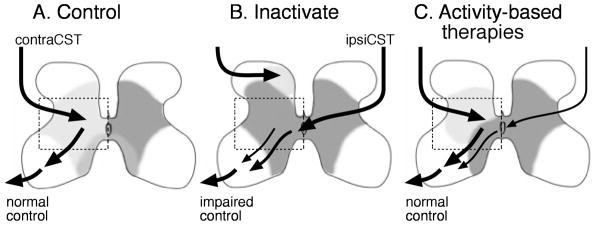Figure 4.
Model for connectional and functional changes in healthy controls (a), after unilateral inactivation between weeks 5 and 7 (b), and after harnessing activity-dependent processes (c, either reverse inactivation, corticospinal tract [CST] stimulation, or constraint-induced movement therapy). Left side shows contralateral spinal projections (light gray). Line thickness and location denotes density and strength of connections as well as location. After unilateral inactivation, CST terminations are in an aberrant dorsal territory (b; light gray patch). The impaired movements are controlled by a combination aberrant contralateral and ipsilateral connections (black arrows from ipsilateral tract).19 Reverse inactivation, CST electrical stimulation, or combined restraint of the unimpaired limb and training of the impaired limb each help to restore CST connections to more intermediate and ventral regions (c; gray field) and less aberrant ipsilateral connections.

